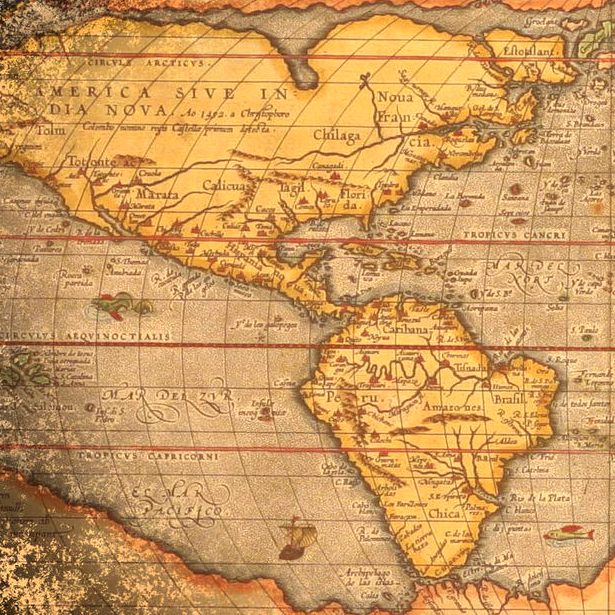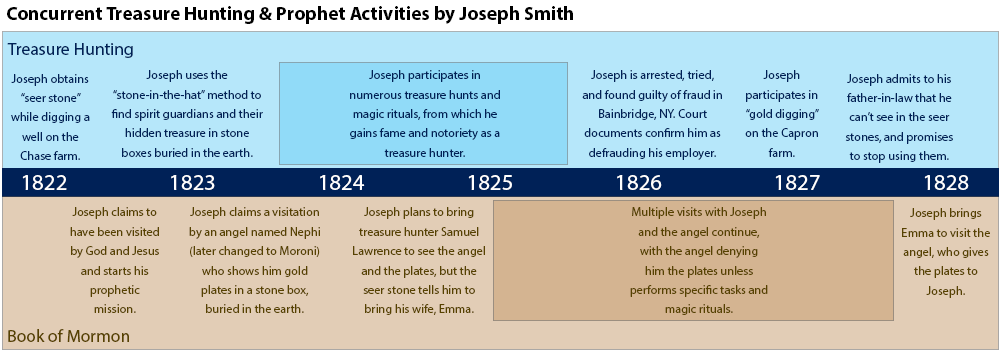
My belief in Joseph Smith as divinely inspired had taken a huge and irreparable hit. So much of the church is based on — and frankly focused on — Joseph Smith, that learning the truth about him started to crack the entire foundation of my beliefs in the church’s truth claims. I was severely shaken by his deceitful and exploitative behavior.
I kept replaying in my head the old scriptural adage “By their fruits ye shall know them” and thinking that a couple of Joseph’s fruits were stone cold rotten. I started to ask some other key questions as the next logical step. If Joseph Smith had a pattern of questionable behavior and a pattern of lying about it, and the church had a pattern of attempting to whitewash those things, were there other aspects of Joseph’s life that displayed the same patterns?
My first stop was to take a fresh look at the Book of Mormon. What I was taught about the Book of Mormon is that it was a record of an ancient American civilization etched in a language called Reformed Egyptian on gold plates and given to Joseph Smith by an angel named Moroni. That Joseph translated the characters on the plates using some ancient spectacles that mounted in a breastplate, and that the Book of Mormon text was the product of that translation exercise. I was taught that several people saw the plates and other objects and that eventually those items were taken back by the angel.
At this point in my research I was openly questioning my belief in Joseph Smith as a prophet, so I was interested to see if my understanding about the Book of Mormon was still sound, or if there were issues with the story of its origin, too. Only slightly surprisingly, I discovered some core issues with the Book of Mormon, both in its origin story and in its actual content.
Translation Issues
I was taught that Joseph used something called the Urim and Thumim (ancient spectacles mounted in a breastplate) to read the words on the plates and translate them into English. That the plates were on the table open in front of Joseph and there was a curtain that separated him from a scribe. Joseph supposedly read the gold plates with the spectacles and the English translation would appear, which he would then recite to the scribe.
But the actual method used was fundamentally different. Joseph took what is called a “peep stone” or seer stone and placed it in his hat in which he buried his face. He then dictated the words to a nearby scribe who wrote it down. As David Whitmer described it:
This rock-in-a-hat method is what Joseph used to produce every page of the Book of Mormon that exists today. He did not look at the plates and truly translate them by any scholarly means, nor by the taught means of using the ancient magic glasses provided to him. Sometimes the plates were not even in the room when he was dictating it. Sometimes the plates were not even in the house but hidden in the woods while he was dictating. Face in a hat with a rock, with the plates nowhere in sight. This is again a very different story than what the church teaches.
What is also very interesting is when you consider the history of the stone that he placed in the hat. This was not a rock given to him by an angel, nor hidden up in stone boxes in the ground by prophets of old. This stone was found a few years earlier by Joseph while digging a well on the farm of Willard Chase. This is the very same stone that Joseph used in what is called “treasure-seeking” where Joseph would put the stone in his hat, bury his face in the hat, and look in the stone to “reveal” where lost treasure could be found. People would pay him to take them out into the woods and tell them where to dig to find things such as Captain Kidd’s lost loot.
In 1826, Joseph was arrested and brought before a judge to answer fraud charges brought by his employer Josiah Stowel who had hired Joseph to find treasure in the ground though use of the stone. They never found any treasure and Josiah accused him of fraud. The court documents were very interesting to read and gave me some insight into the character of Joseph at the time – that he claimed he could find treasure with his stone. Joseph was fined and released because of his youth.
There is vast evidence of Joseph being heavily involved in treasure seeking, glass looking, superstition, and a magical world view. There are court transcripts, journals, and letters from people who were all around Joseph at the time. So many examples of him being hired to find treasure, but somehow there was never any treasure found and people began to suspect Joseph was a fraud. I found it very troubling to think that it was this same “peep stone” he used for treasure hunting to then translate the Book of Mormon. Not a stone from God. A stone he found in a well; one that he used to trick people. Of course, this is another issue for which there is so much evidence that Apologists have no choice but to confirm that he was a treasure hunter, and that he used the same peep stone for both the treasure hunting and Book of Mormon translating.
Apologists try to spin it by saying that Joseph was a treasure hunter early on, but then quit and was only later involved in the Book of Mormon, but the timeline tells a very different story. It did not happen sequentially, but concurrently. During the same time he was treasure digging, he had already supposedly experienced the First Vision and the first visits from Moroni but it was before he had begun translating the Book of Mormon. In the treasure seeking world, he was looking for gold and treasure buried in stone boxes in the earth, guarded by spirits while at the same time talking about gold plates buried in the earth guarded by an angel. Those sounded uncomfortably alike to me.

It did not seem reasonable to me that Joseph would have continued to treasure hunt after having seen God and Jesus and visited with the angel Moroni three times. That he would continue his treasure hunting activities with his peep stone, looking for gold buried in the earth while at the same time getting the plates from Moroni and starting his translation. Shouldn’t he have been starting on his prophetic mission now? Yet here he is getting arrested for fraud during the same period. I find it extremely hard to say that at the same time Joseph was supposedly a prophet doing God’s good work, he was also swindling people with his peep stone.
Certainly, I did not expect Joseph to be a perfect man. I assumed he had faults and made mistakes just like anyone else did. But this was something else. This was starting to look to me like the behavior of a conman. What I started to realize was that the gold plates story sounded just like any other treasure story of Joseph’s. And this story seemed to evolve and get more grandiose as time progressed. Even simple things changed in the story, like what the name of the angel was. The earliest records that exist about Joseph’s heavenly visit called the angel Nephi, not Moroni. Multiple sources, including Lucy Mack Smith’s book (make sure you read her original text, not the one rewritten later by Orson Pratt), and an 1842 “Times and Seasons” and “Millennial Star” publication edited by Joseph Smith himself that referred to the angel as Nephi. Later, each of those instances was changed to say Moroni, so if you look at the official LDS church record, it says “Moroni” in keeping with their approved narrative. But look at the primary source material for these instances and it very clearly says “Nephi”. Let me ask you this: if you had an angel appear to you multiple times, do you think you would forget his name? That might be the kind of thing you would remember.
Treasure seeking at the same time as being a prophet? Same peep stone used to swindle and to translate? Can’t get the angel’s name right? Something was beginning to smell pretty rank in Joseph Smith’s story.
Historicity Issues
I turned to the Book of Mormon (BoM) itself and began to research its content. Yet again, I discovered vast and undeniable issues with the book. I had been taught my whole life that the book told the story of the Native Americans, who were really a group of people called Lamanites. They were one of two groups of people who had descended from a Jewish family that migrated from Jerusalem around 600BC across the ocean to the American continent.
The text of the book described a land northward and a land southward, separated by a “narrow neck of land”. I was taught that this was North and South America separated by the Isthmus of Panama. I had read this concept in sermons, scriptures, in lesson manuals; I had heard it from the mouths of apostles and prophets. This was not someone’s opinion. This was taught as a hard fact. There was no ambiguity in teaching that the Nephites and Lamanites filled both American continents. And for years and years I had heard faith-promoting rumors attempting to authenticate the story of the BoM.
I cannot tell you how many times I had heard that in “some caves” in Kentucky or at the bottom of a Great Lake, they found Hebrew and Egyptian characters written on the wall, proving definitively that the Book of Mormon was true and it really happened. I found it interesting that I could never get clear answers from anyone when I asked for sources through which I could verify the claims. I chalked most of those rumors up to wishful thinking, but there is a clear belief in the church that Native Americans are in fact descended from the Jews. Frequently pictures of Mayan and Aztec ruins were shown and people would say, “See? Look at all this evidence. The Book of Mormon is true.”
But what I discovered was this single, simple, unmistakable, inescapable truth:
There is a complete absence of any evidence in favor of the historicity of the Book of Mormon, and there is an indisputable mountain of evidence disproving it. Like gargantuan, heaping slabs of evidence disproving it. Like high-speed-boiling-lava-barreling-down-a-mountainside-and-crushing-a-large-city kind of evidence disproving the Book of Mormon.
Although there were hundreds of pieces of disproving evidence I discovered that eventually undermined my belief in the Book of Mormon, I will summarize only a handful of them here. Feel free to do your own research into these and the other abundant issues that exist. These items combined with so many more eventually led to my conclusion that the Book of Mormon is not a historical document at all.
Exmo: How I Killed the Mormon God, Chapter 8: Book of Mormon Translation & Historicity Issues | ©2017 Aaron Case. All Rights Reserved.
Chapter List
- Introduction
- Ch. 1 – Scorched Earth
- Ch. 2 – Discovering Mormon Temple Ceremony-Changes
- Ch. 3 – Starting on a Path
- Ch. 4 – Starting to See the Truth
- Ch. 5 – Busting Polygamy Wide Open
- Ch. 6 – Apologetic Spin
- Ch. 7 – The Church Hides Damaging Truth
- Ch. 8 – Book of Mormon Translation & Historicity Issues
- Ch. 9 – Native American DNA Is Not Jewish
- Ch. 10 – Anachronisms of Objects & Language
